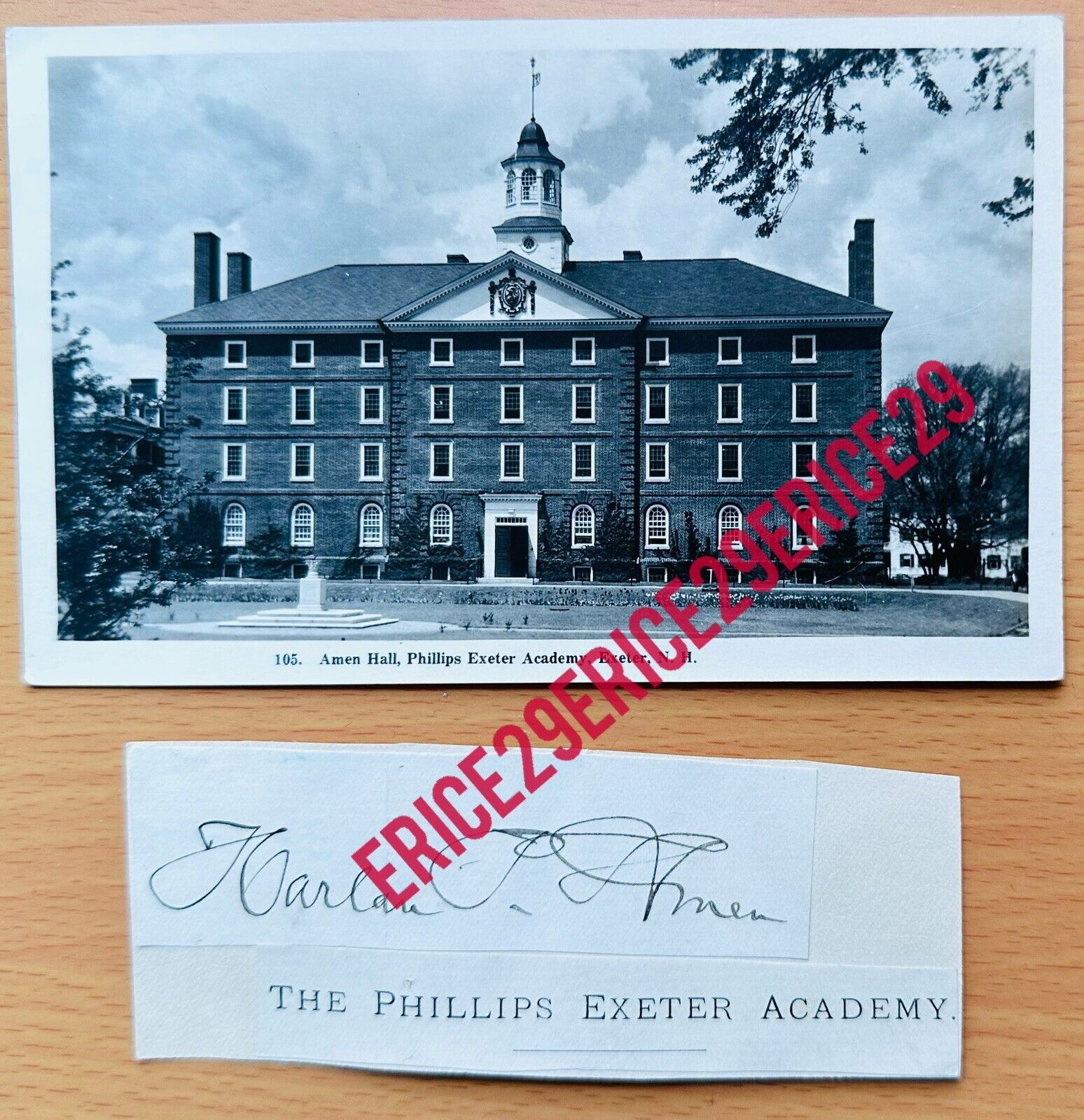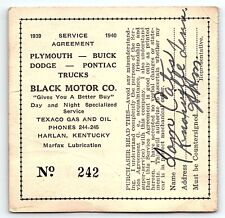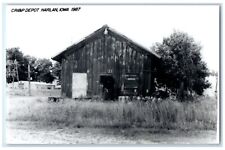When you click on links to various merchants on this site and make a purchase, this can result in this site earning a commission. Affiliate programs and affiliations include, but are not limited to, the eBay Partner Network.
Harlan P. Amen
7th Principal
Phillips Exeter Academy 1895–1913
Exeter, New Hampshire
SIGNATURE
4 1/2” x 1 5/8”
Includes Postcard of Amen Hall
5 3/8” x 3 1/4”
Amen Hall at Exeter is named for him.
Harlan Amen
Harlan Page Amen (April 14, 1853 – November 9, 1913) was an American educator and the Seventh principal of Phillips Exeter Academy.
Harlan P. Amen
7th Principal of Phillips Exeter Academy
In office 1895–1913
Preceded by
Charles Everett Fish
Succeeded by
Lewis Perry
Personal details
Born April 14, 1853
Sinking Spring, Ohio, U.S.
Died November 9, 1913 (aged 60)
Exeter, New Hampshire, U.S.
Alma mater Harvard University
Biography
Harlan Amen was born in Sinking Spring, Ohio, in April 1853, to Daniel and Sarah J. (Barber) Amen. He was born into a poor family, and had to make an earning working as a clerk at a bookstore. He attended high school in Portsmouth, Ohio, then attended Exeter, where he befriended his roommate and future president of Bowdoin College, William De Witt Hyde, entering in 1871. He sustained himself during his education by working as a tutor, among other jobs. In his senior year, he was awarded the $120 Gordon scholarship. He then went on to Harvard University, graduating in 1879. Immediately after graduating, he began work at Riverview Military Academy in Poughkeepsie, New York, where he became principal. He took a four month leave in 1892 to visit prestigious public schools in England, including Eton, Harrow, Rugby, and St Paul's. In 1895, he became the principal of Exeter.
Under Amen's leadership, the size of student body, the faculty body, and the enrollment tripled. Dormitories Soule Hall, Peabody Hall, Hoyt Hall and Webster Hall were built. Alumni Hall, the first dedicated dining hall, was built in 1903 and has since been renovated to house the Mayer Art Center and the Lamont Gallery. The library, previously housed in the Academy Building, was moved to the Davis Library, funds for which were willed by Benjamin Price Davis '62 in 1907. During his time at Exeter, he was also involved in the founding of Fessenden School, encouraging the founder, Frederick Fessenden, to purchase the plot of land on which the school sits. He remained principal until his death in October 1913.
Amen was married to Mary Brown Rawson on April 5, 1882, with whom he had one son, John Harlen Amen, a lawyer and the Nuremberg Prison Chief interrogator, and three daughters: Margaret R., Elizabeth W. and R. Perne Amen. He was awarded an honorary Master of Arts degree by Williams College in 1886, and a Doctor of Letters degree by Dartmouth College in 1911. He died on November 9, 1913 in Exeter, and was a Presbyterian. Amen Hall at Exeter is named for him.
Phillips Exeter Academy
Phillips Exeter Academy (often called Exeter or PEA) is a highly selective, coeducational independent school for boarding and day students in grades 9 through 12, and offers a secondary postgraduate program. Located in Exeter, New Hampshire, it is one of the oldest secondary schools in the United States and among its most prestigious.
Phillips Exeter Academy
Exeter, New Hampshire 03833
Independent, day & boarding
Motto
Latin: Non Sibi
(not for oneself)
Latin: Finis Origine Pendet
(The End Depends Upon the Beginning)
Greek: Χάριτι Θεοῦ
(By the Grace of God)
Established
1781; 242 years ago
Founder
John Phillips
Elizabeth Phillips
Principal
William K. total
865 boarding
214 day
Average class size
12 students
Student to teacher ratio
5:1
Campus size
673 acres (272 ha)
Campus Maroon and Grey
Athletics
22 Interscholastic sports
62 Interscholastic teams
Team name Big Red
Rival
Phillips Academy, Andover
Newspaper The Exonian
Yearbook PEAN
Endowment
$1.3 billion (as of June 2018)
Budget
$107 million (2017-2018)
Annual tuition
$57,563 (boarding)
$44,960 (day)
Alumni
Old Exonians
Exeter is based on the Harkness education system, a conference format of student interaction with minimal teacher involvement. It has the largest endowment of any New England boarding school, which as of 2018 was valued at $1.3 billion. On January 25, 2019, William K. Rawson was appointed by the academy's trustees as the 16th Principal Instructor. He is the 4th alumnus of Exeter to serve as Principal Instructor, after Gideon Lane Soule (1838–1873), Harlan Amen (1895–1913), and William Saltonstall (1946–1963).
Phillips Exeter Academy has educated several generations of the New England establishment and prominent American politicians, but has introduced many programs to diversify the student population, including need-blind admission. In 2021, over 49% of students received financial aid from grants totaling over $25 million. The school has historically been among the most selective secondary schools in the world, with an acceptance rate of 11% for the 2020–2021 school year. and approximately 30% of graduates attend an Ivy League university.
Management of the school's financial and physical resources is overseen by trustees drawn from alumni. Day-to-day operations are headed by a principal, who is appointed by the trustees. The faculty of the school are responsible for governing matters relating to student life, both in and out of the classroom.
The school's first enrolled class counted 56 boys; in 1970, when the decision was made to implement co-education, there were 700 boys. The 2018 academic year saw enrollment at 1,096 students, with 883 boarding students and 213 day students. The student body is roughly equally split between boys and girls, who are housed in 25 single-sex and two mixed-sex dormitories. Each residence is supervised by a dormitory head selected from the faculty.
History
John Phillips, the founder of Phillips Exeter Academy
First Academy Building c. 1910, where the school opened in 1783
Phillips Exeter Academy was established in Exeter, New Hampshire, in 1781 by Elizabeth and John Phillips. John Phillips had made his fortune as a merchant and banker before going into public service, and financially supported his nephew Samuel Phillips, Jr. in founding his own school, Phillips Academy, in Andover, Massachusetts, three years earlier. As a result of this family relationship, the two schools share a rivalry. The school that Phillips founded at Exeter was to educate students under a Calvinist religious framework. However, like his nephew who founded Andover, Phillips stipulated in the school's founding charter that it would "ever be equally open to youth of requisite qualifications from every quarter."
Phillips had previously been married to Sarah Gilman, wealthy widow of Phillips' cousin, merchant Nathaniel Gilman, whose large fortune, bequeathed to Phillips, enabled him to endow the academy. The Gilman family also donated to the academy much of the land on which it stands, including the initial 1793 grant by New Hampshire Governor John Taylor Gilman of the Yard, the oldest part of campus; the academy's first class in 1783 included seven Gilmans. In 1814, Nicholas Gilman, signer of the U.S. Constitution, left $1,000 to Exeter to teach "sacred music."
The academy's first schoolhouse, the First Academy Building, was built on a site on Tan Lane in 1783, and today stands not far from its original location. The building was dedicated on February 20, 1783, the same day that the school's first Preceptor, William Woodbridge, was chosen by John Phillips.
Exeter baseball team in 1881, including a student from the Chinese Educational Mission
Exeter's Deed of Gift, written by John Phillips at the founding of the school, states that Exeter's mission is to instill in its students both goodness and knowledge:
"Above all, it is expected that the attention of instructors to the disposition of the minds and morals of the youth under their charge will exceed every other care; well considering that though goodness without knowledge is weak and feeble, yet knowledge without goodness is dangerous, and that both united form the noblest character, and lay the surest foundation of usefulness to mankind."
Exeter participated in the Chinese Educational Mission, hosting seven students from Qing China, starting in 1879. They were sent to learn about western technology, and attended Exeter among other schools to prepare for college. However, all students were recalled after just 2 years (in 1881) due to mounting tensions between the United States and China, as well as growing concern that the students were becoming Americanized.
Harkness gift
Edward S. Harkness, benefactor
On April 9, 1930, philanthropist and oil magnate Edward Harkness wrote to Exeter Principal Lewis Perry regarding how a substantial donation that Harkness would make to the academy might be used to fund a new way of teaching and learning:
What I have in mind is a classroom where students could sit around a table with a teacher who would talk with them and instruct them by a sort of tutorial or conference method, where each student would feel encouraged to speak up. This would be a real revolution in methods.
The result was "Harkness teaching", in which a teacher and a group of students work together, exchanging ideas and information, similar to the Socratic method. In November 1930, Harkness gave Exeter $5.8 million to support this initiative. Since then, the academy's principal mode of instruction has been by discussion, "seminar style," around an oval table known as the Harkness table. Today at Phillips Exeter Academy, all classes are taught using this method, with no more than 12 or 13 students per class.
This informality was for many decades reflected in the school's "unwritten code that there were no rules at the academy until you broke one." Expelled alumni include the journalist David Lamb and the writer and editor George Plimpton.
Recent history
The academy became coeducational in 1970 when 39 girls began attending. In 1996, to reflect the academy's coeducational status, a new gender-inclusive Latin inscription Hic Quaerite Pueri Puellaeque Virtutem et Scientiam ("Here, boys and girls, seek goodness and knowledge") was added over the main entrance to the Academy Building. This new inscription augments the original one—Huc Venite, Pueri, ut Viri Sitis ("Come hither boys so that ye may become men").
Notable alumni
Early alumni of Exeter include US Senator Daniel Webster (1796); John Adams Dix (1809) a Secretary of the Treasury and Governor of New York; US President Franklin Pierce (1820); physician and founder of Sigma Pi Phi Henry McKee Minton (1851); Abraham Lincoln's son and 35th Secretary of War Robert Lincoln (1860); Ulysses S. Grant, Jr. (1870); Richard and Francis Cleveland; "grandfather of football" Amos Alonzo Stagg (1880); Pulitzer Prize-winning author Booth Tarkington (1889) and Hugo W. Koehler (1903), American naval spy during the Russian Revolution and step-father of United States Senator Claiborne Pell. John Knowles, author of A Separate Peace and Peace Breaks Out, was a 1945 graduate; both novels are set at the fictional Devon School, which serves as an analog for his alma mater.
Exeter alumni pursue careers in various fields. Other alumni noted for their work in government include Gifford Pinchot, Lewis Cass, Judd Gregg, Jay Rockefeller, Kent Conrad, John Negroponte, Bobby Shriver, Robert Bauer and Peter Orszag. Alumni notable for their military service include Secretary of Navy George Bancroft, Benjamin Butler, and Charles C. Krulak. Authors George Plimpton, John Knowles, Gore Vidal, John Irving (whose stepfather taught at Exeter), Robert Anderson, Dan Brown (whose father taught at Exeter), Peter Benchley, James Agee, Chang-Rae Lee, Debby Herbenick, Stewart Brand, Norb Vonnegut, Roland Merullo and Caroline Calloway also attended the academy.
Other notable alumni include businessmen Stockton Rush, Joseph Coors, Michael Lynton, Tom Steyer, Mark Zuckerberg, David Goel, and Stephen Mandel; lawyer Bradley Palmer; entrepreneur and presidential candidate Andrew Yang, journalist Drew Pearson, Dwight Macdonald, producer and entrepreneur Lauren Selig, James F. Hoge, Jr., Paul Klebnikov, Trish Regan, Suzy Welch, and Sarah Lyall; actors Michael Cerveris, Catherine Disher, Jack Gilpin, and Alessandro Nivola; film director Howard Hawks; musicians Phil Wilson, Bill Keith, Benmont Tench, China Forbes, Ketch Secor Win Butler and William Butler; historians Robert Cowley, Arthur Schlesinger, Jr., and Brooks D. Simpson; writers Roxane Gay and Joyce Maynard; screenwriters Tom Whedon[162] and Tom Mankiewicz; baseball players Robert Rolfe and Sam Fuld; educators Jared Sparks and Benno C. Schmidt, Jr.; composer Adam Guettel; musician and podcaster Hrishikesh Hirway, humorist Greg Daniels; mathematicians Shinichi Mochizuki, David Mumford, and Lloyd Shapley, winner of the 2012 Nobel Prize in economics; economist Paul Romer, winner of the 2018 Nobel Prize in economics, computer scientist Adam D'Angelo (co-founder of Quora); and philosopher and evolutionary biologist Daniel Dennett. Serial killer H.H. Holmes also attended the school.
Franklin Pierce
Daniel Webster
Mark Zuckerberg
Andrew Yang
Howard Hawks
Gore Vidal
Booth Tarkington
Robert Todd Lincoln
Tom Steyer
Roxane Gay
George Plimpton
Stockton Rush







